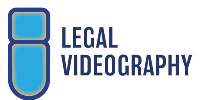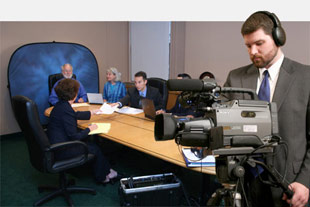Precision-Based Legal Videography for Detailed Evidence Filming.
Precision-Based Legal Videography for Detailed Evidence Filming.
Blog Article
Why Legal Videography Is Essential for Accurate Legal Record-Keeping
In the realm of lawful procedures, the precision of record-keeping is vital, and lawful videography arises as an essential device in this context. By recording the subtleties of spoken and non-verbal interaction, it dramatically lowers the possibility for misinterpretation that can accompany traditional written records. Furthermore, the conservation of genuine aesthetic proof not only improves the integrity of statements however also adds to a detailed account of occasions. As we check out the complex benefits of legal videography, one must consider its implications for the future of judicial stability and transparency.
Significance of Visual Evidence
Developing the importance of aesthetic proof in lawful process is paramount for making sure accurate record-keeping and boosting the general integrity of the judicial process. Aesthetic evidence functions as a vital tool in recording occasions, conditions, and other significant details that might be necessary to a case. Unlike written accounts, which are prone to analysis and prejudice, aesthetic recordings give an objective, unalterable depiction of truths as they happened.
This form of proof can catch a selection of elements, consisting of witness behavior, ecological context, and physical proof, all of which may influence judicial end results. By presenting a clear and extensive aesthetic story, legal videography removes ambiguity and assists to protect the authenticity of the evidence.
Furthermore, aesthetic evidence can be critical in lowering conflicts over factual inconsistencies, as it allows for a direct contrast versus testament and other documented records. In an age where digital innovation is increasingly common, the ability to existing visual proof properly can dramatically improve the general quality of legal proceedings. Inevitably, the unification of aesthetic proof not just boosts the paperwork process yet additionally strengthens public count on the judicial system by promoting openness and liability.
Enhancing Testimony Credibility
The integration of legal videography into court room procedures dramatically boosts the credibility of witness testimony. By capturing the subtleties of verbal and non-verbal interaction, video recordings supply an even more extensive depiction of a witness's disposition, emotions, and dependability. This aesthetic documentation enables jurors to observe the witness's body language, faces, and overall carriage, which are essential components that can affect their understanding of statement reliability.

Additionally, the presence of video footage can discourage witnesses from offering deceptive or overstated declarations, as they realize that their testament is being tape-recorded. This liability strengthens the integrity of the judicial process. Eventually, lawful videography works as a crucial tool in making certain that witness testament is not only accurately shown but likewise checked out with enhanced reputation by all parties entailed.
Comprehensive Record Preservation
Comprehensive record conservation is crucial for maintaining the stability of legal procedures. Legal videography serves as a critical tool in this process, offering a precise visual and auditory account of statements, depositions, and other zero hours in a situation. Unlike standard written records, video recordings capture the nuances of body language, tone, and feeling, which are important for recognizing the context and intent behind statements made during legal process.
Incorporating audiovisual elements into record-keeping improves the conservation of evidence, ensuring that it remains intact and obtainable throughout the legal process. This is specifically crucial in cases where the integrity of witness declarations may be tested, as visual recordings can corroborate insurance claims and supply quality. Additionally, video documents can be indispensable throughout allures or retrials, providing an unaltered representation of the original testament.

Moreover, the capability to evaluate video proof allows lawyers to identify vital information that might have been neglected in written documents. By preserving a thorough archive of lawful proceedings with videography, law office can maintain the greatest requirements of accuracy and accountability, ultimately adding to a fairer judicial procedure.
Simplifying Lawful Procedures
Improving legal proceedings is essential for boosting performance and minimizing delays within the judicial system. Legal videography works as a crucial device in accomplishing this goal by providing clear and exact aesthetic paperwork of court hearings, depositions, and statements - legal videography. This technology permits real-time recording, ensuring that all verbal and non-verbal signs are caught, which can help with quicker resolution of conflicts
The assimilation of videography into legal procedures decreases reliance on traditional techniques, such as extensive records, which can be time-consuming to create and evaluate. By having actually accessibility to recorded footage, attorneys can quickly reference crucial moments, improving their capacity to prepare and present cases efficiently. This immediacy likewise aids in the making clear of testimonies, lowering the potential for false impression.

Admissibility in Court
Precise paperwork is important not only for performance however also for making sure that proof is acceptable in court. Lawful videography works as an essential device go now in this procedure, giving a reputable aesthetic record of statements, declarations, and events. Courts commonly see this require proof to meet details requirements of admissibility, including importance, authenticity, and integrity. Top quality video clip recordings can meet these criteria by recording clear audio and aesthetic information that written transcripts may forget.
To be regarded admissible, lawful videography needs to follow well-known methods, such as proper equipment use, appropriate lighting, and clear sound capture. Additionally, it is necessary to have certified videographers that understand the lawful requirements surrounding proof collection. legal videography. The chain of guardianship need to additionally be maintained to avoid any type of cases of tampering or alteration
Furthermore, legal videography can improve the persuasiveness of evidence by providing jurors with a direct view of the statement, permitting an extra involved understanding of the situation. In summary, the integration of lawful videography see this website right into record-keeping not just sustains efficiency but also reinforces the stability and admissibility of proof in court procedures.
Verdict
To conclude, lawful videography plays a crucial duty in making sure exact lawful record-keeping by giving objective visual documentation. This approach boosts the reliability of statements, maintains extensive records, and streamlines legal process. Additionally, the admissibility of high-quality video clip evidence in court further highlights its significance. Inevitably, the unification of lawful videography right into the judicial process promotes openness and boosts public trust in the honesty of the legal system.
Report this page